Could Your HDB Flat Be Worth $1 Million? Here’s How Many Are Close In 2024
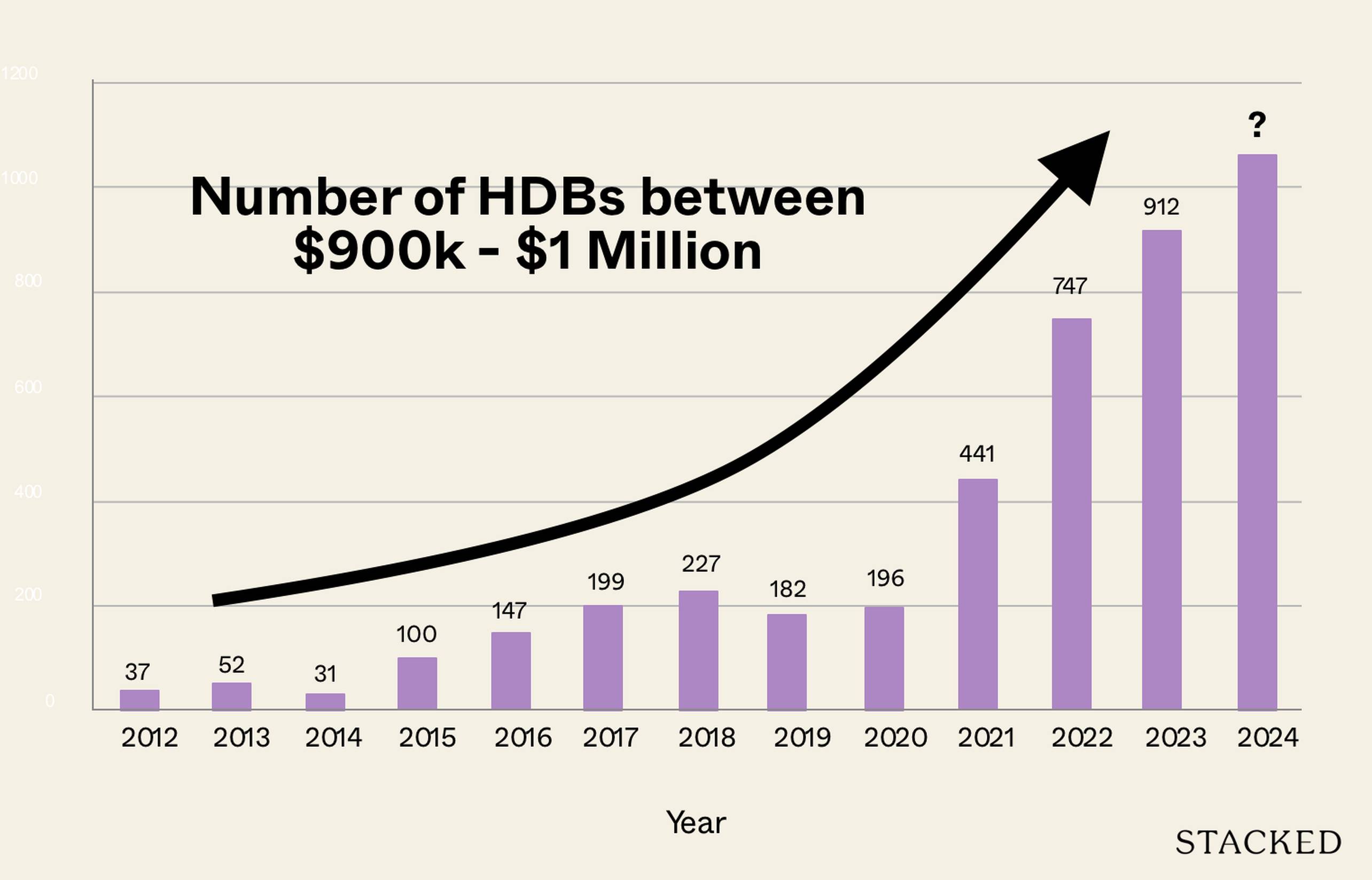
Get The Property Insights Serious Buyers Read First: Join 50,000+ readers who rely on our weekly breakdowns of Singapore’s property market.
A seasoned content strategist with over 17 years in the real estate and financial journalism sectors, Ryan has built a reputation for transforming complex industry jargon into accessible knowledge. With a track record of writing and editing for leading financial platforms and publications, Ryan's expertise has been recognised across various media outlets. His role as a former content editor for 99.co and a co-host for CNA 938's Open House programme underscores his commitment to providing valuable insights into the property market.
As the old saying goes, don’t focus on the ball but on where the ball is going. We’ve seen an explosive rise in the number of million-dollar flats in the past few years, even if they’re still the minority of transactions (for now). So let’s look instead at the up-and-coming resale flats: the ones that are creeping toward the $1 million mark, but are not quite there yet. Here’s how the proportion of $900,000+ resale flats has been mounting:
How has the number of near million-dollar flats risen over the years?
For the purposes of “near” a million, we’re looking at flats with a quantum of between $900,000 and $1 million:
| Year | <900k or >1m | Between 900k & 1m | Total | Proportion |
| 2012 | 23,161 | 37 | 23,198 | 0.16% |
| 2013 | 16,045 | 52 | 16,097 | 0.32% |
| 2014 | 16,065 | 31 | 16,096 | 0.19% |
| 2015 | 17,680 | 100 | 17,780 | 0.56% |
| 2016 | 19,226 | 147 | 19,373 | 0.76% |
| 2017 | 20,310 | 199 | 20,509 | 0.97% |
| 2018 | 21,334 | 227 | 21,561 | 1.05% |
| 2019 | 22,004 | 182 | 22,186 | 0.82% |
| 2020 | 23,137 | 196 | 23,333 | 0.84% |
| 2021 | 28,646 | 441 | 29,087 | 1.52% |
| 2022 | 25,973 | 747 | 26,720 | 2.80% |
| 2023 | 24,862 | 912 | 25,774 | 3.54% |
| 2024 | 21,457 | 1,059 | 22,516 | 4.70% |
Some notable trends:
1. These transactions are still the minority, but are growing rapidly
If we were to take a truly big-picture view, 1,059 transactions would not be a huge number in relation to the wider market. Flats between $900,000 to $1 million still make up less than five per cent of all resale transactions; and in a sense, the way we treat the news reflects that. (i.e., realtors and news outlets blast these high transactions on the front page, which if you think about it, reflects on how they’re still not the norm.)
We’d also point out that percentage-wise, an increase of 37 to 52 transactions between 2012 and 2013 (around a 40.5 per cent increase) was a bigger jump than 2023 to 2024 (about a 17 per cent increase).
Nonetheless, the growth over 10 years has been explosive. For the whole year of 2012, a mere 37 flats in the entire country reached the $900,000+ range; far below even a single percentage point. But today? From word on the ground, analysts and realtors have also told us there isn’t a single HDB town without at least one $900,000+ transaction.
While these transactions are still rare, the market seems to be in the process of normalising them.
2. High-value flats seemed more resilient toward the 2014 cooling measures
By 2013, resale flat prices were so high, that the government stepped in with aggressive measures. HDB stopped publishing Cash Over Valuation (COV) data, and the Mortgage Servicing Ratio (MSR) was capped at 30 per cent.
This move had serious teeth in the wider resale market, with COV rates plummeting immediately. In the years immediately following the change, it was a norm to see zero COV transactions; and the resale market remained on a near-consecutive slide for the following eight years; its revival only came in the immediate aftermath of Covid, when there was a housing supply crunch.
A quick snapshot might explain the situation better. Here are average resale flat prices across all types, and all towns, since the big drop in 2014:
If you look at the number of $900,000+ flats, however, they seem to have bucked the trend. The number of these pricey flats steadily increased all the way up to 2018, seeing a decrease only in 2018/19 (partially related to the end of the en-bloc craze, which brought about heightened market sentiment toward lease decay).
This shows that people were still forking out huge sums for $900,000+ flats, throughout the period when MSR and lack of COV data was dragging the wider market down. This likely reflects the superior location of these flats, which (before the Plus and Prime schemes) couldn’t be replicated by new supply.
3. Fewer concerns over lease decay
Most flats in the $900,000+ price range and above tend to be older. Among these, we find maisonettes and jumbo flats that are no longer built; and the scarcity partly contributes to the price.
(An exception would be the newer DBSS projects which came from the ‘00s, but even these are far from new, built between 2005 to 2012).
There doesn’t seem to be much concern over the lease decay today, however. There was a period when it more deeply affected market sentiment (see point 2); but perhaps the post-Covid housing shortage, plus rallying news of flat prices, have helped buyers to quickly get over the fact.
Speculatively, schemes like the Lease Buyback Scheme (LBS), as well as an increasing tendency to see flats as homes rather than investments may be contributing to this. Older Singaporeans, who simply want a good location to live out the rest of their lives may be unconcerned about “overpaying.” Resale gains, rental yields, and other such factors may be meaningless abstractions to them; and for someone in their mid-60s to 70s, even a 30-year lease can be deemed sufficient.
4. In the short term, Plus and Prime models may support rather than bring down these prices
It is possible that, in the long run, higher availability of flats in desirable areas could help to moderate prices. Restrictions like a 10-year MOP don’t matter to true homebuyers, who intend to live there a long time (possibly for their whole life); so restrictions don’t change the impact of higher supply in traditional hot spots.
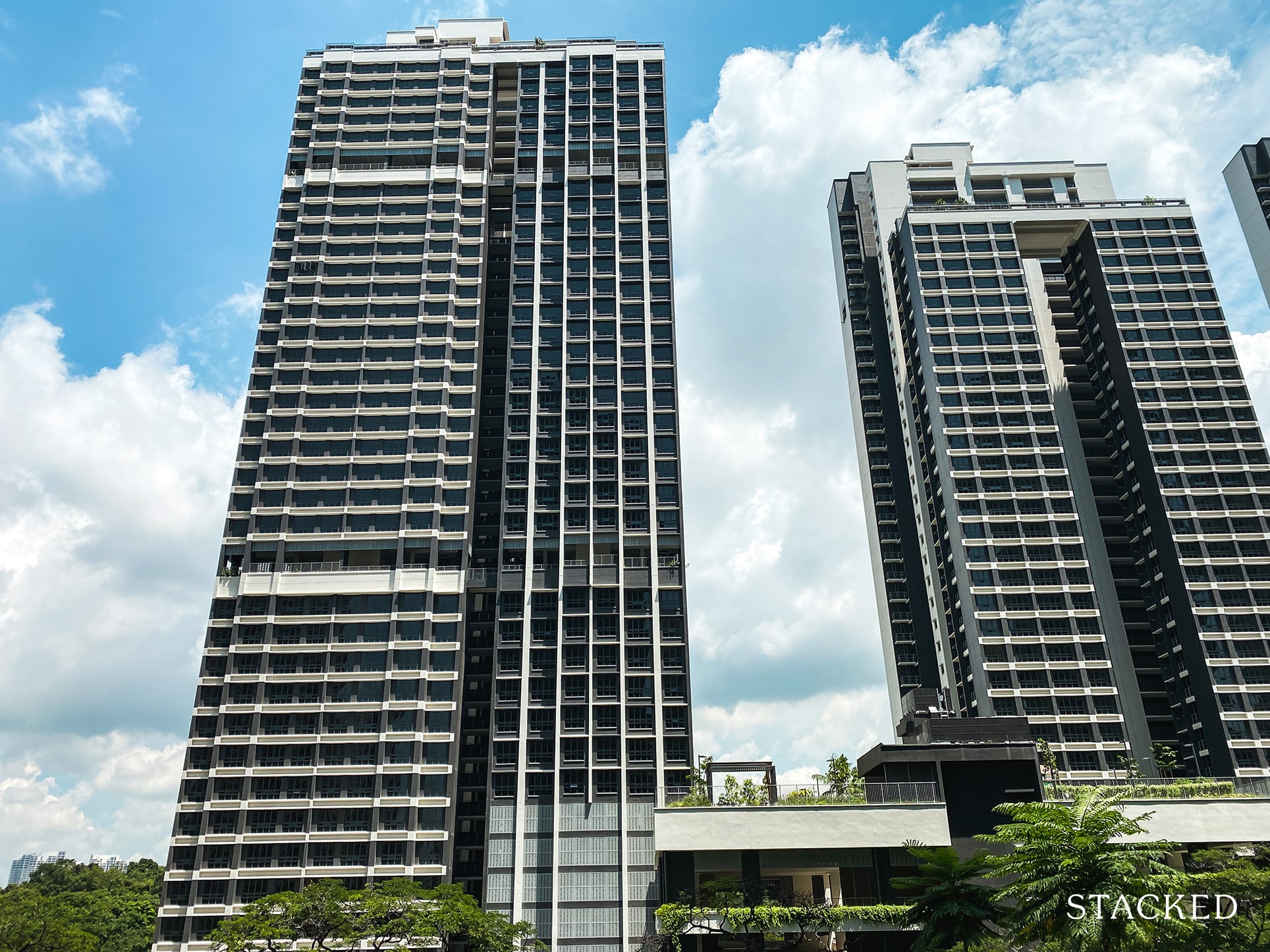
In the shorter term, however, the opposite may happen. We’ve already heard the sales pitch to resale flat owners in Kallang – Whampoa, Bukit Merah, Queenstown, and other hot spots: their flat has the same location as Prime projects, but none of the drawbacks – no 10-year MOP, clawback, eligibility requirements, etc. As such, they’re justified in pushing up their asking prices; and it’s hard to argue that doesn’t make some sense.
For more on the situation as it unfolds, follow us on Stacked; and do reach out to us for help, if you’re struggling to find a home in this market. If you’d like to get in touch for a more in-depth consultation, you can do so here.
Ryan J. Ong
A seasoned content strategist with over 17 years in the real estate and financial journalism sectors, Ryan has built a reputation for transforming complex industry jargon into accessible knowledge. With a track record of writing and editing for leading financial platforms and publications, Ryan's expertise has been recognised across various media outlets. His role as a former content editor for 99.co and a co-host for CNA 938's Open House programme underscores his commitment to providing valuable insights into the property market.Read next from Property Trends
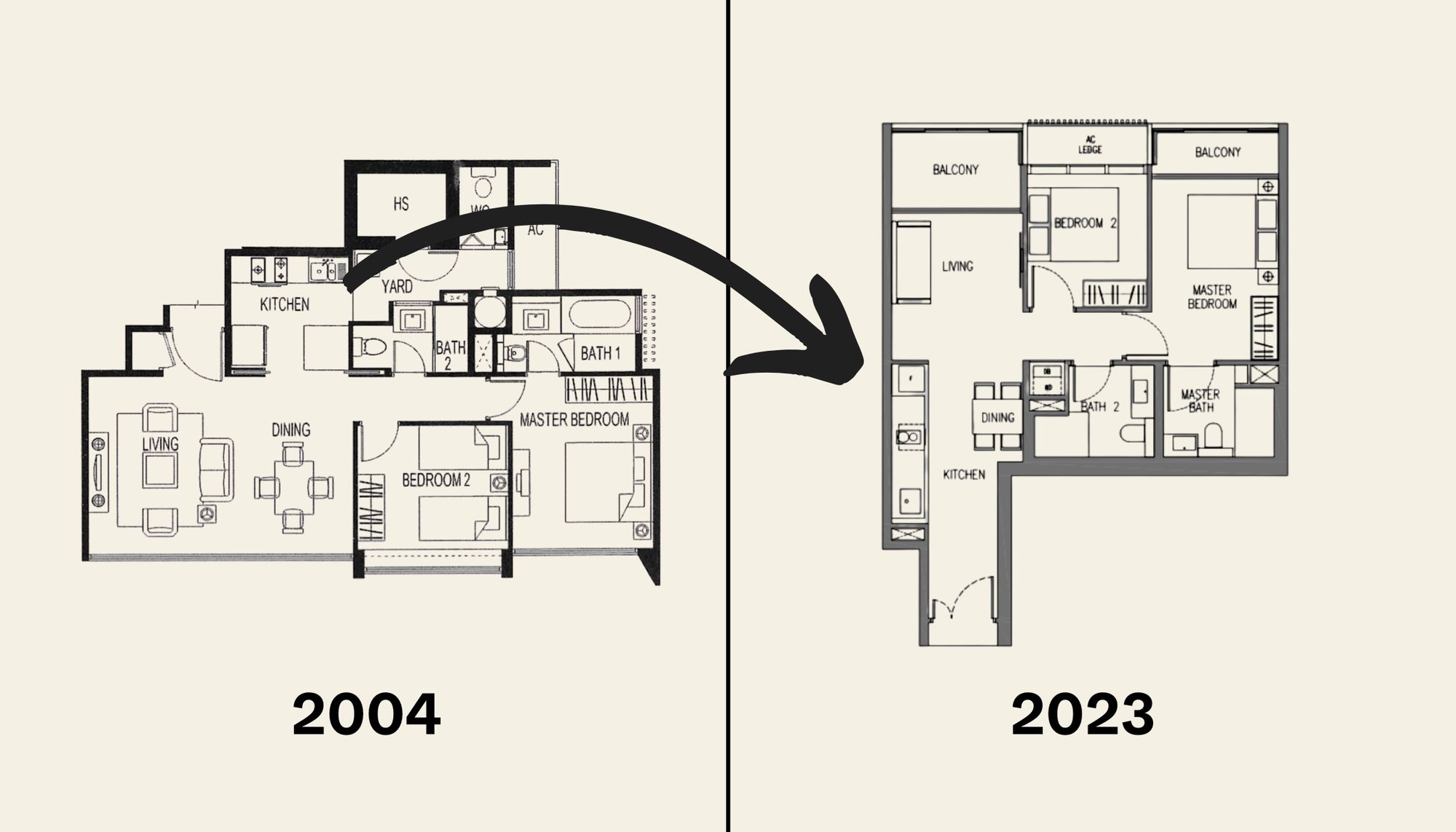
Property Trends The Room That Changed the Most in Singapore Homes: What Happened to Our Kitchens?
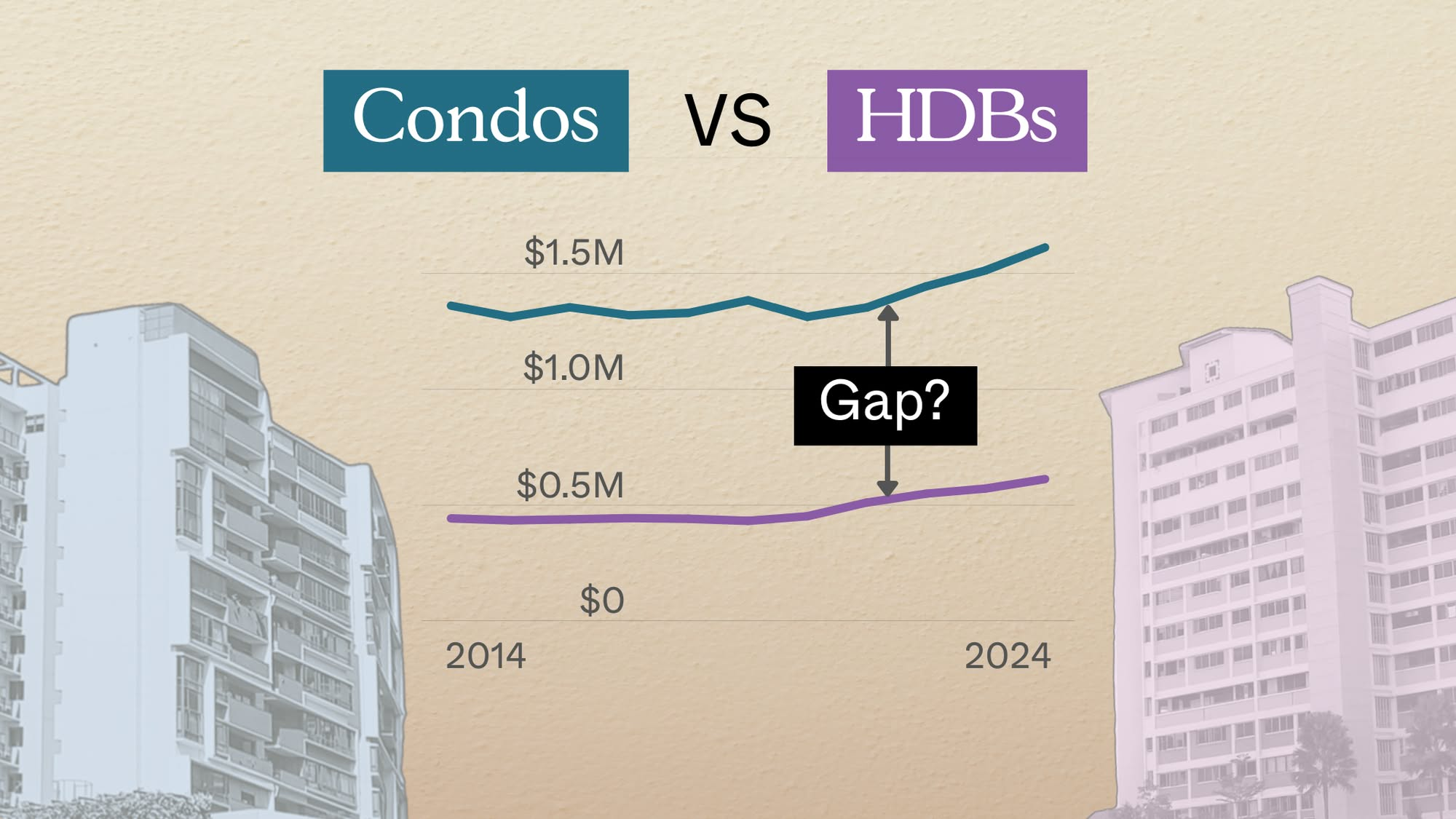
Property Trends Condo vs HDB: The Estates With the Smallest (and Widest) Price Gaps
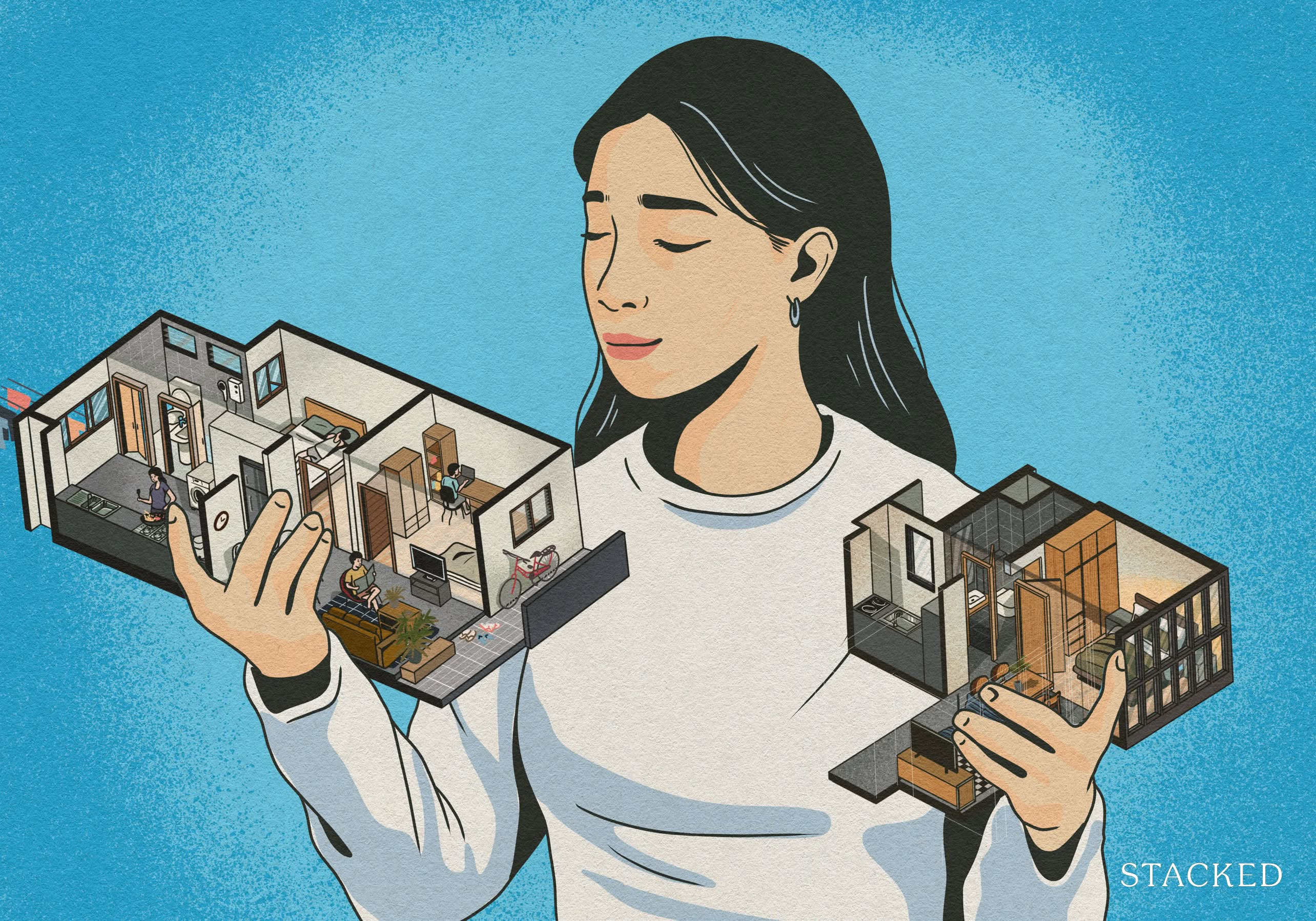
Property Trends Why Upgrading From An HDB Is Harder (And Riskier) Than It Was Since Covid
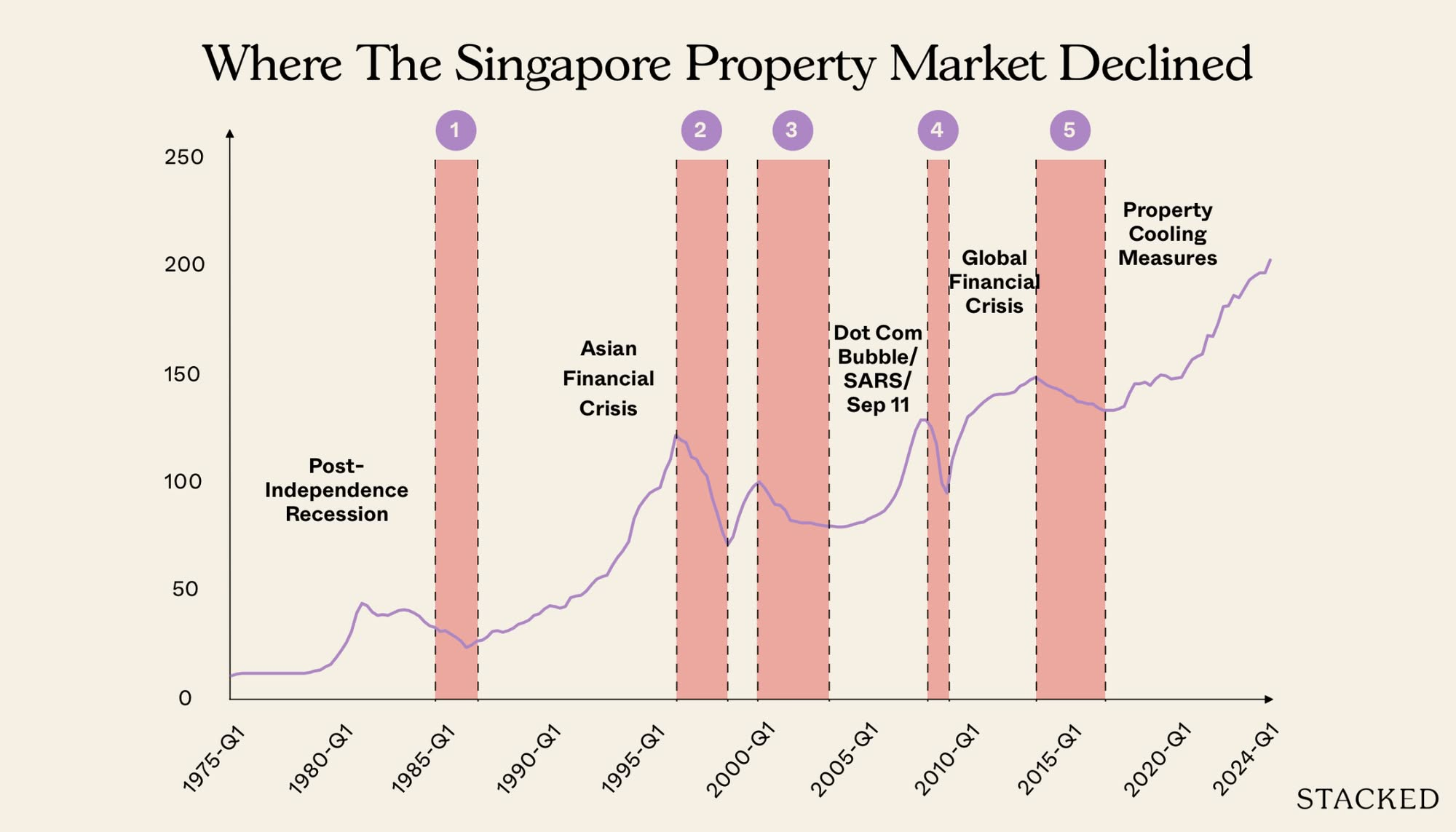
Property Trends Should You Wait For The Property Market To Dip? Here’s What Past Price Crashes In Singapore Show
Latest Posts

Singapore Property News This HDB Just Crossed $1.3M For The First Time — In An Unexpected Area

Singapore Property News “I Never Thought I’d Be Sued by a Tenant.” What Long-Time Landlords in Singapore Miss

Property Market Commentary I Lived In Bayshore When It Was ‘Ulu’. Here’s How Much It Has Changed

Singapore Property News HDB Resale Prices Finally Slowed in 2025 — Will It Continue in 2026?

Singapore Property News Breaking News: District 23 Condo Sells Out In Under Two Years At $2,120 Psf Average

On The Market Here Are The Cheapest 3-Bedroom Condos in Central Singapore You Can Still Buy From $1.15M

Property Market Commentary Why The Singapore Property Market Will Be Different In 2026 — And It’s Not Just About Prices

Editor's Pick 2025 Year-End Review Of The Singapore Property Market: What The Numbers Reveal

Pro This 21-Year-Old Condo Didn’t Sell Out Initially, Yet Became A Top Performer

Editor's Pick How The HDB Resale Market Performed In 2025, And What It Means For 2026 Prices

Editor's Pick 4 Key Trends Reshaping Singapore’s New Launch Condo Market In 2026

Editor's Pick What I Only Learned After My First Year Of Homeownership In Singapore

Singapore Property News Why More Land Doesn’t Automatically Fix Housing In Singapore

On The Market Here Are The Cheapest 4-Room HDB Flats in Central Singapore You Can Still Buy From $490K

Editor's Pick Should We Buy An Old 99-Year Leasehold Condo To Live In: Will It’s Value Fall When The Lease Runs Out?


